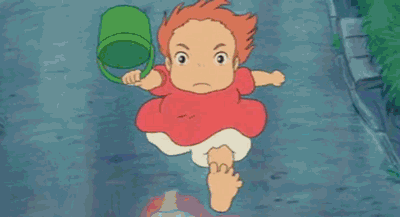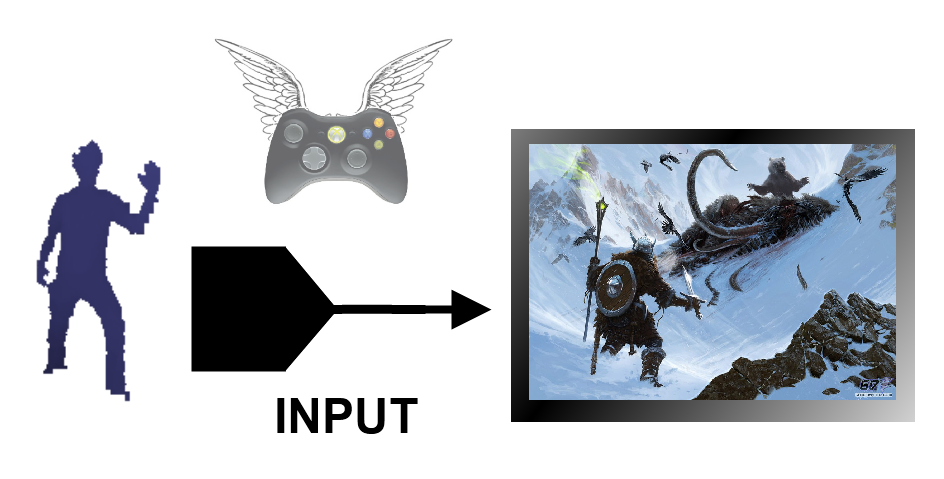I’ve played almost every Kinect game available, and I have to admit, most of them aren’t very good. There are a few exceptions, which I’ll get to below.
The “controller-less” aspect of the Kinect was what brought it so much initial excitement. However, we’re still not good at designing experiences that take advantage of this. As players, we’re given this massive input bandwidth, the kind of bandwidth we’re used to operating in the daily joy of living in our bodies, and most games restrict that bandwidth severely.
This “restriction” or “constraint” might be a necessity of design. Perhaps, between you and the game world, there has to be a series of clear verbs or actions. Walk, crouch, shoot, hug, look, etc. These act as an instructive list of things the player can do in the world, but also act as convenient labels for buttons on whatever controller you’re using to play the game.
Buuuuuut, the real world doesn’t work that way. The labels for actions exist to catalogue what happened, much like a dictionary exists to describe what words mean in common use, rather than define how they may be used. For example, there is no correct “hug”, but there are many, many kinds of hugs.
If one were making a game with hugging as one of the main actions, the subtle aspects of these hugs could maybe be designed to have a minor effect on the game, but a large part of the experience is the sensation of the player acting out the hug itself. The huge bandwidth and necessary uniqueness of an individual hug is what whole-body interaction is about. This is the stuff we tell stories to ourselves about. This is how we find meaning in our lives.
(NOTE: I haven’t actually considered making a game about hugging, but how awesome would that be?)
Going back to what goes on with most Kinect games these days, almost all of them give the player very constrained body-movement/action relationships, with little room for self-expression, accidental or intentional.
It’s almost as if our standard way of thinking about game design (coming up with actions and associations) is preventing us from figuring out how to properly use this thing. It’s as if the (now unnecessary) controller is acting as a “design intermediary”; the lowest bandwidth chokepoint of the system.
Here’s a round-up of the top-tier Kinect games that I don’t think are doing enough:
Kinect Sports and Kinectimals were really exciting when the Kinect initially came out, for showing a diversity of things that the Kinect can do, but lose replay value because there is only really one way to do each thing. They feel a lot like quick time events.
Dance Central is a timing-based music game, where certain specific dance moves are expected at certain times. There is a “freestyle” mode where the player can do whatever they want, but this doesn’t appear to have any consequences in the game.
Children of Eden is a shooter where the pointing and shooting actions are accomplished by arm movements.
Games with avatars and movement, like Kinect Star Wars, Kinect Rush: A Disney/Pixar Adventure and Haunt are the most obvious use of a controller as a design intermediary.
Sword-fighting games like Puss in Boots and Kinect Star Wars allow some free movement of the sword, but nothing that really feels groundbreaking. As an aside, there’s currently exciting work ongoing for non-Kinect sword-based gaming.
Here’s two Kinect games that are doing a really good job:
Fruit Ninja Kinect is a game about cutting up as much fruit as possible, as if the tips of your hands are razor-sharp blades. It’s visceral, messy, and there’s no discrete, defined “cut” gesture. Just slash your hands quickly near the fruit.
Double Fine Happy Action Theater is probably one of the few “true” Kinect games out there: in a series of mini-“games”, it does a bunch of stuff totally not possible with anything other than the Kinect. Arguably, none of these are games, as there’s no real scoring or points. However, it’s a series of interesting interaction techniques no one else has done. My favourite is where your room fills with lava and you must jump on the nearest furniture to avoid it. More like this, please!
Here’s some Kinect games that do something interesting, but don’t end up very good:
Leedmees is a multi-player game where you need to lead Lemmings-like creatures across you and your partner’s body. Totally interesting, but unfortunately I found it more difficult and glitchy than fun.
Hole in the Wall. A Kinect version of this glorious Japanese show was happily inevitable. Unfortunately, I didn’t find much replay value, or more to do than “yes, I can fit in these shapes”.
Twister Mania has similar “fit-in-the-shape” mechanic to Hole in the Wall. However, I also felt that there isn’t much replay value. The actors in the trailer are hilariously acrobatic compared to anyone who’ll actually play the game.
How to tell if a Kinect game is good? Your reaction shouldn’t be “Wow! I don’t need a controller.” It should be “Wow! There’s no way I could have ever done this with a controller!”
Full disclosure: this past year, I’ve been working on my own game. Release dates and platforms are uncertain, but it’s safe to say that me and the people I’m working with are really trying to make something that feels like it could only be playable with the Kinect. Stay tuned!
PS. The academic in me wants to future-proof this article by saying “full-body motion sensing device” instead of “Kinect” for generalizability, but I left it as “Kinect” to keep it more readable.
PPS. While searching for hugging gifs, I came across the double-date hug masterpiece below. Tons of subtle interaction going on here – I love it. Make sure you watch it a couple times, looking at each person. A game about showing strong dislike while still being socially polite? I’d play that.
(From Crushable)
Update 15/07/2013: Jeff and Casey talk about this topic here:
http://www.youtube.com/watch?v=Rz-uUZlxnuM#t=838s





4 responses to “The State of Kinect Gaming”
[…] Follow this link: The State of Kinect Gaming | | Dustin FreemanDustin Freeman […]
Dustin, nice job. In music there is a term, “idiomatic”. It underlies why you use a certain instrument in a certain way for a certain intent in composition and orchestration. The reasons that we have different instruments (viz. “musical controllers”) is to expand the richness of the palette that we have to draw on, and in turn, to expand the breadth of music. There is no need to invent the sax if we are going to remain in the baroque forever. But in inventing the sax, the challenge was collectively discovering its true voice, and the idiom(s) where it could expand our musical vocabulary – jazz being just one. I read what you have written as an insightful step in helping articulate the properties of full bodied gestural controllers, especially in contrast to – equally valid but different – traditional controllers. For me, at least, it was interesting, insightful and welcome. Thanks.
Agreed Bill. As an example I never liked jazz violin, and just don’t think it can be a good jazz instrument. But in this case I would argue it is not a question of violin vs. saxophone (two different “true” voices), but rather kazoo vs. saxophone, the traditional controller being the kazoo.
Your dictionary metaphor is wonderful. I will be shamelessly adopting it when explaining why so-called NUI is more nuanced than select-noun-and-verb. There are some anecdotes about controller-oriented games such as driving sims that use Kinect for adjusting view for head movements, using this new input channel to augment gameplay rather than shoehorning it into established patterns of discrete action.
I’ve been noodling on how the prevalence of spatial sensing will give rise to more nuanced casual gesture approaches in UI, but you are right to challenge the “gesture” mindset itself.